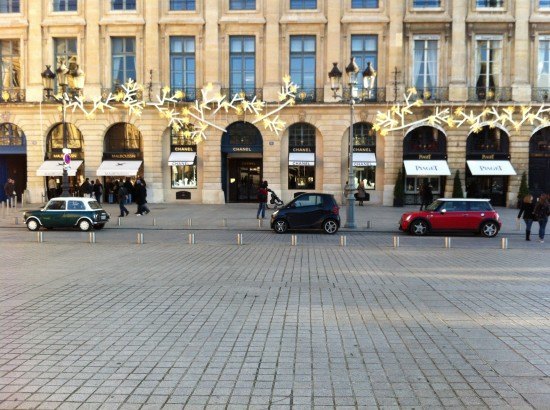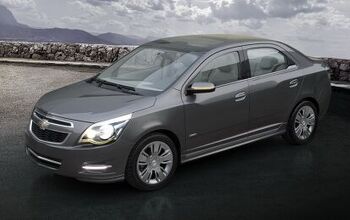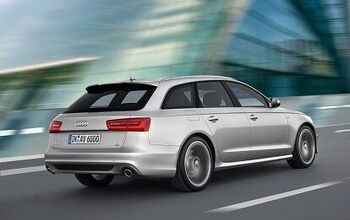What's Wrong With This Picture: A Mini's Progress Edition
My two weeks in Europe has drawn to a close, and I’m back at my familiar desk, in front of my familiar computer, catching up on all the automotive happenings I missed, contemplating my transition out of TTAC’s day-to-day leadership, and reflecting on all I saw over my whirlwind two weeks. And though you haven’t heard from me much in the last two weeks, rest assured that I have not forgotten TTAC, nor have I missed any opportunities to accumulate impressions from the automotive landscape of modern Europe.
This week I will publish two reviews of the automobiles I drove over the last two weeks, and though neither of these cars are available in the US, I believe they both hold fascinating lessons that are highly applicable and relevant to both the US market and the global auto business. But in the meantime I thought I’d share this picture, which would be near impossible to take in the US, and which speaks volumes about the evolution of small cars. Just blocks from Paris’s Place de la Concorde, in front of Chanel’s flagship Parisian boutique, I was able to capture a classic and modern Mini, with a Smart ForTwo sandwiched in between for scale.
I’ll leave commentary on this image to TTAC’s Best and Brightest, but I will say that the tableau stopped me in my tracks. Though I’ve always loved the classic Mini, and I have only the deepest admiration for those who keep these wonderful cars in daily use, this image confirms just how much our automotive expectations have changed. If you think a Smart makes undue compromises in the pursuit of its city-friendly size, imagine what an original Mini must be like in today’s traffic….
More by Edward Niedermeyer


































Comments
Join the conversation
Small cars are getting bigger. Consumers can now get subcompact fuel economy out of almost mid-sized sedans like the Corolla, Jetta, and Cruze. Here in the US few consumers select tiny cars by choice and it looks like even the Mini has grown to meet expectations. As others have said, safety expectations for children also establish a minimum car size. The both new CAFE requirements and consumer demand reward longer wheel base and wider track. Expect more cars with extremely short overhangs and wheels pushed out to the corners.
My parents first car in Australia was a Morris Mini, green with a white roof. Nicknamed "bricks" because they looked like one compared to the Holdens, Fords and Valiants, could go round corners like it was on rails, and it certain circumstances could out race them. We a young kids, 10 and 6, didn't have the pleasure of actually driving it, only riding in it, but I know that it was a regular long distance driver and I can only remeber it breaking down when the fan belt broke. That's when I learnt or heard about legendary "pommy" engineering. Apparently it was not an easy thing to change. Plus it's legendary dislike of water and rain, but being in Australia before climate change, the rain only came once or twice a year and you could ptrepare or be prepared for water ingress of the front mounted distributer. As for a Smart car only usefull fro belting around the city streets, wouldn't take one of those anywhere near a highway, the new MINI I would, just too expensive down here. and
I think most comparisons of the US and Europe as far as car needs are a bit diseigenuous. Sure the US is a big country - but you know what, SO IS EUROPE in these days of no borders and Schengen. Most Americans car NEEDS don't differ significantly from most Europeans, merely thier WANTS. Sure SOME people need to tow rolling ranch homes, and thus allegedly need a truck, but I saw far more caravans being towed around by quite modest cars while I was in Europe last summer than I ever see here, even living in "Vacationland". Their campers are just smarter than ours. Lighter and more cleverly designed. Plenty of European cities have sprawling suburbs too. But what do I know, I am all for my health insurance not being tied to my employment, and a reasonable social safety net in general.
Christ I want a old Mini, the 88' Volvo 240 just feels too safe going down 64/40. But alas the upcoming bankruptcy due to the wife's thyroid shutting down (yes, we are both college educated, employed and "insured") might prevent that for a decade or three.